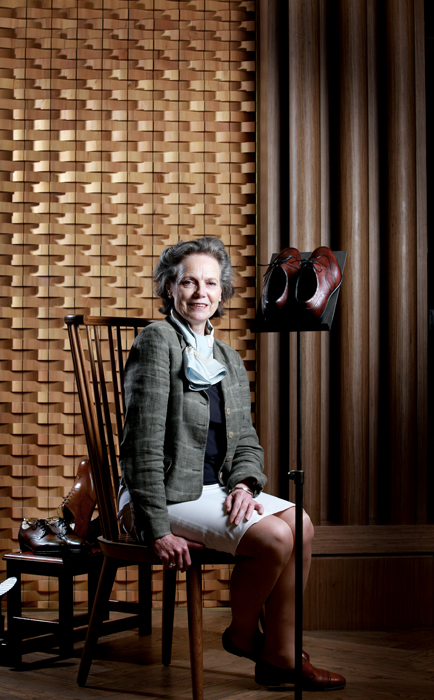The original mill building at the Johnstons of Elgin Factory.
During my trip to Scotland way back in April, I took a trip a bit further north to Elgin, to tour the Johnstons of Elgin factory. The facility is one of the oldest factories in Scotland - some of the buildings date back to the 19th century. It was actually quite interesting to walk around the complex and see the evolution of the factory right before your eyes. Most of the buildings had a plaque on the outside which indicated the year it was built, so one can literally see how the process of making clothing and fabrics was refined and improved throughout the years, as buildings housing more and more advanced functions were added to the factory.
Tours are available periodically throughout the day from the Cashmere Heritage Center. As we were visiting midweek, we were fortunate enough to (1) have a tour guide to ourselves; and (2) arrive at the factory when it was closed - this sounds like a bad thing, but you're actually able to see and hear a bit more (and stray a bit from the yellow tour line) because the loud machines aren't going and so any potential safety concerns are mitigated somewhat.
It was also quite interesting to see very large Chinese trees in the yards as you walked around the grounds. Apparently, seeds are often trapped amongst the wools and cashmeres delivered to the factory. As the seeds escape, they can sometimes take root. In the above image, a Chinese pistachio tree has taken root in the north of Scotland.
Another Chinese tree taking root in Elgin.
Tours are available periodically throughout the day from the Cashmere Heritage Center. As we were visiting midweek, we were fortunate enough to (1) have a tour guide to ourselves; and (2) arrive at the factory when it was closed - this sounds like a bad thing, but you're actually able to see and hear a bit more (and stray a bit from the yellow tour line) because the loud machines aren't going and so any potential safety concerns are mitigated somewhat.
In most cases, each building had a plaque describing the part of the process that was taking place on the premises. In this case, you can see a brief description of the dyeing or coloring process.
As the plaque indicates, in the first step of production batches of fibers are dyed in large vats. Below, you can see just how large those vats actually are.
From here, the tour continued to the winding and yarnstore.
To be continued . . .
.JPG)













.JPG)
.JPG)
.JPG)



.JPG)
